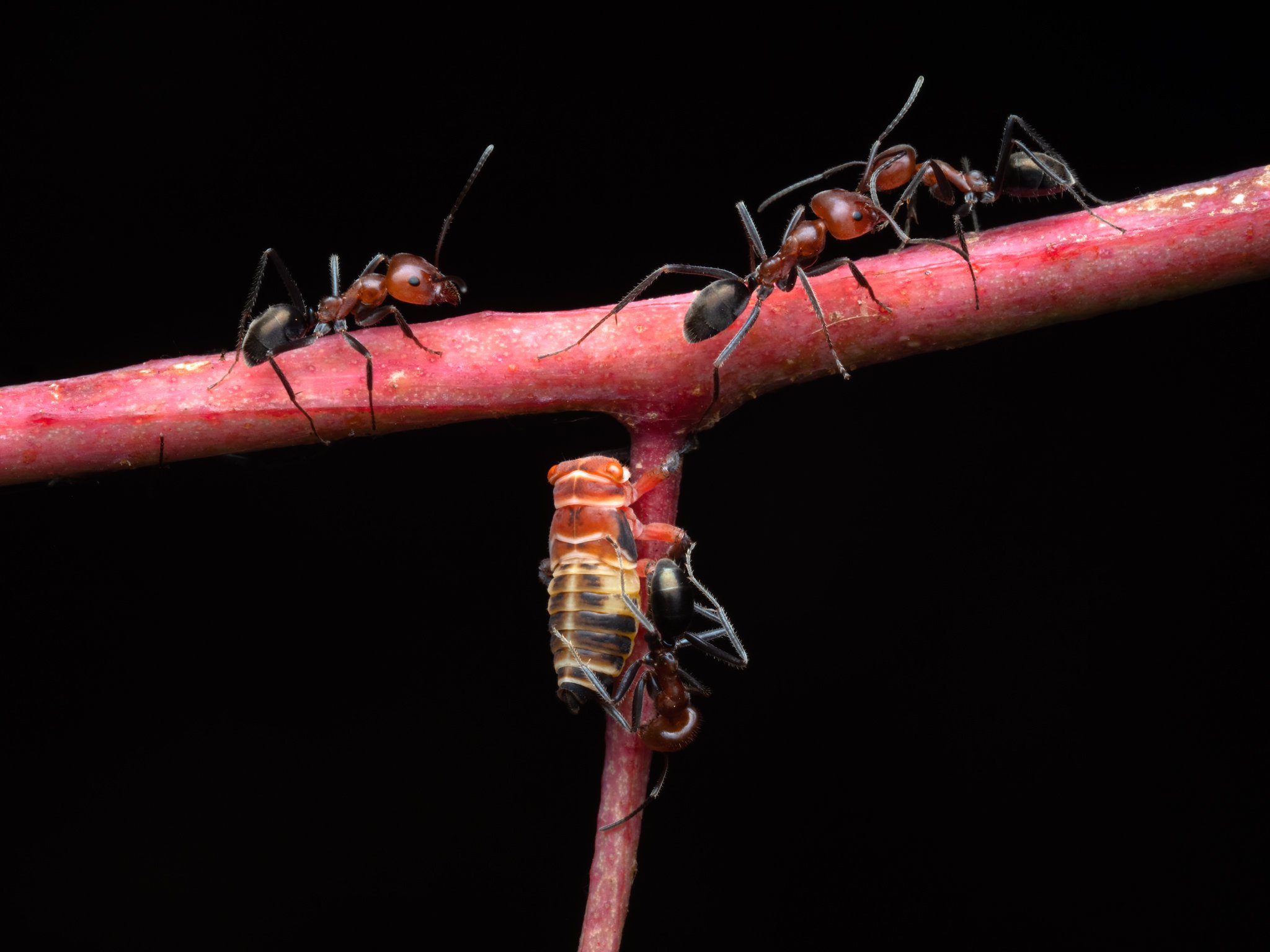Ants and Hoppers
Ant protecting a Green Treehopper from the lady with the camera
At first glance the ant above might be thought to be attacking the Treehopper it is standing on. That is not the case however - in fact it is the total opposite. The ant, seeing a large mammal holding a strange flashy thing, is standing ready to fight to protect the hopper.
This is because, over the years, a mutualistic relationship has evolved between various species of ant and hopper, where both species benefit equally from the relationship. The ant is prepared to protect the hopper, because it knows it will be paid handsomely.
Hoppers and their nymphs have mouth parts that penetrate the trees they are on, sucking up sap. Any excess sap is then excreted in the form of sugar-rich honeydew - and ants love honeydew.
Gum Leafhopper nymph with protective ants
Ants are able to both bite and sting in defence, and use these to protect the hoppers from predators, parasites and other sap-sucking insects that might compete with them. In return, the hoppers are only too happy to pay the ants with their excess honeydew.
There is more to it than just an ant standing over them however, as the ants will move the hoppers and their nymphs around from one place to another on their host plant/tree, to both protect them, and to maximise their honeydew production. If they have fed in one area for a while the sap might be running low, so they are moved to a fresh supply nearby.
Ant guarding a creche of young hopper nymphs
It’s a relationship in which both benefit, but which also benefits the macro photographer looking for hoppers to photograph.
Whilst ants can always be found running around the branches, twigs and leaves of trees and shrubs, it is worth watching where they are going, especially if there seem to be a lot of them. Watching the ants carefully can often lead you to their hopper charges, either in adult or nymph form, or a combination of the two.
Ant keeping a close eye on two adult Gum Leafhoppers




